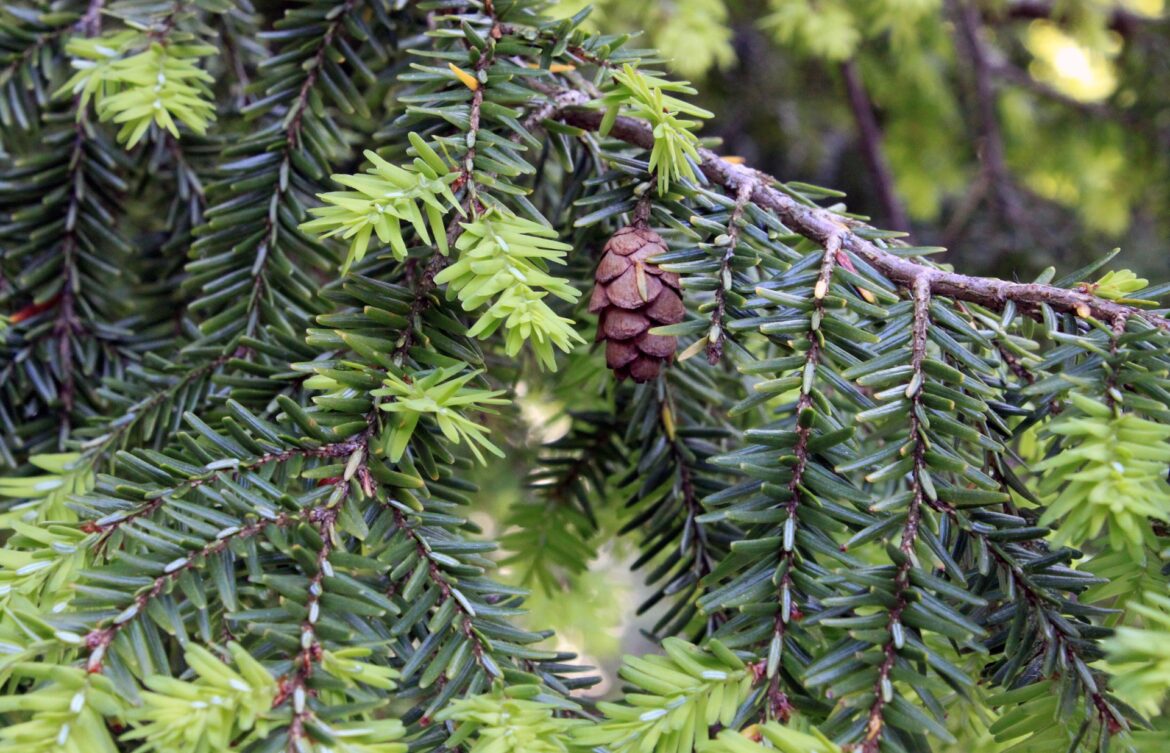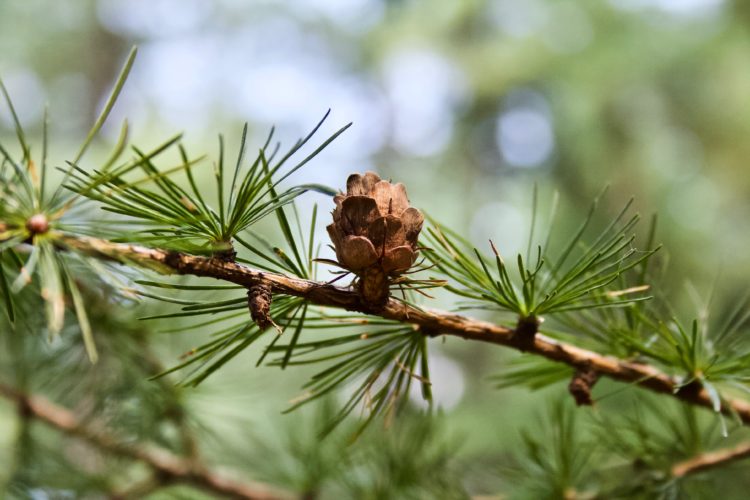
Since we all spend so much time riding beneath stands of trees or between cacti, our “mountain biker’s guide to nature” series takes a closer look at those organisms with the hope of inspiring curiosity and wonder. This time around we dig into hemlock trees, beginning with a little lore.
Legend has it that ancient Greek thinker Socrates made a serum of hemlock and drank it when he chose to end his life in 399 BCE. A non-toxic soothing tea can also be made from the needles of a hemlock tree. The eight to ten (depending on source) species of hemlock trees that tower across forests in North America and parts of Asia were named after an unrelated plant from the carrot family that is commonly called “poison hemlock,” the plant Socrates chose for his suicide companion.
One study states that “They called the tree ‘hemlock’ because it was accursed. Other conifers milled out as clean, clear boards and timbers; this new wood, compared to pine and spruce, was rough-textured, splintery, and tended to warp.” Other lore would suggest that the tree got its name because the needles share a similar fragrance with the poisonous plant when crushed.
The two most common hemlock trees in North America are the Western Hemlock and the Canadian or Eastern Hemlock, named after their respective geographical habitats. Western Hemlock grows from Oregon across western British Columbia to southern Alaska, where it’s typically found among other tree species like Douglas Fir and Red Cedar, at mid to high elevation. Older specimens can reach heights of over 100 feet, and some individual trees live for over 1,000 years.

The shade-tolerant Eastern Hemlock range is vast, extending from Quebec province to the state of Alabama, and generally growing between sea level and 5,000 feet. According to USDA data, “The geographic distribution of eastern hemlock completely overlaps that of Carolina hemlock (Tsuga caroliniana), which differs in its high elevation habitats, leaves mostly spreading all directions from the twigs, and more elongate seed cones.” Eastern hemlock trees have been fighting an insect infestation since the early 1950s called “hemlock wooly adelgid.” The insects feed off the hemlock’s sap and can kill a specimen within 3-5 years. Forestry crews and conservationists are working to rid the forests of these insects before they decimate the species, similar to the fungal “chestnut blight” that ravaged east coast forests in the 1900s.
The fourth hemlock species that rounds out the native to North America trees is called the Mountain Hemlock. These trees grow on the west coast of the US between California and Alaska, with stands found as far east as Montana, and, as their name would suggest, they typically grow at high elevations. Their cones distinguish the species from other hemlocks, growing to a far larger size with darker red and brown colors in contrast to the tiny tan cones of the Western Hemlock.
The scientific name for hemlock is the Japanese word Tsuga, and there are two species of the tree spread across the Japanese archipelago. Of the two species, Northern Japanese Hemlocks are commonly found at higher elevations, between 2,300 and 8,200 feet. It is a shorter species, reaching heights of 30-40 feet at full maturity, and often shorter given its resistance to frost in high alpine zones. The Southern Japanese Hemlock grows to a height similar to the North American species, and it is the most wind and drought tolerant of the bunch. Both of the Japanese species are resistant to the insects that plague trees on the east coast of North America, and scientists are working to create hybrids to replace forests that have been devastated by the bugs, similar to the American Chestnut story.

In 2018, a new species of hemlock was discovered on a tiny island off the coast of Korea. Named after its home island, Ulleungdo hemlock will likely be placed on the endangered species list soon, as there are very few specimens alive today. It was discovered by a geneticist who was working to determine why Asian hemlocks are resistant to adelgid insects, and it’s likely the most recent temperate conifer identified since a new species of Cyprus was found in Vietnam in 2002.
Finally, the commonly named Taiwanese or Chinese Hemlock is arguably split into a few different species, and they are some of the tallest under the Tsuga moniker. Their massive range covers parts of Tibet, China, Taiwan, and northern Vietnam. Pollen and seed cones from these species are more green in color compared to the others, with a darker blackish brown bark hues.
How do I know if the tree I see is a hemlock?
There are several characteristics that set hemlock apart from other evergreen conifers. The most obvious ones are their often tiny seed and pollen cones that litter the forest floor like pebbles, and their leaves with two white stripes on the underside like a white fir–though less uniform in placement and length than a fir. The video below offers a clear means to determine if you have found a hemlock or not.
Human and animal uses
Industrial uses for hemlock wood include paper pulp, construction materials, and furniture, and the tanic acids in its bark are used to soften and strengthen leather products. While there are a loads of hemlock specimen in forests around the world, the tree’s slow growth and its susceptibility to insect infestation has put some species on the watch list for endangerment.
According to a report from the University of Vermont, “Native American tribes of the Northeast would boil the bark of the eastern hemlock and make a paste they would put on wounds to help them heal faster, which worked because of its astringent properties. Tea can be made from the twigs and needles, which is high in vitamin C and said to help cure kidney problems. Because of the high vitamin C content, the bark is occasionally used to cure scurvy. Historically, the cambium of the tree was used as a base for breads and soups. Sometimes it was even mixed with animal fat and dried fruit to make food high in nutrition.”
Check out the following video to learn more about hemlock trees, what folks are doing to save them, and how to make a tea from their leaves.
If you’re curious about something you see alongside the trail, or in the soil under your tires, let us know and we will do the research.





















1 Comments
Jul 5, 2021